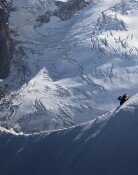South Korea Becomes 12th Country to Produce Supersonic Aircraft
South Korea Becomes 12th Country to Produce Supersonic Aircraft
Posted August. 31, 2005 06:49,
After five years of preparation, Korea Aerospace Industries (KAI) has launched a project to develop a Korean supersonic trainer jet in a partnership with U.S. aerospace manufacturer Lockheed Martin that began in 1997.
Prototype One of the T-50, the name of the trainer and first announced in October 2001, completed a series of several high level flight tests, including a successful first flight in August 2002, and supersonic flight in February 2003. The number of tests the prototype went through reached approximately 1,150. In addition, the development of A-50 attack planes, which are T-50s with air-to-ground missiles and laser-guided bombs, has been going on smoothly.
The government has spent 2.1 trillion won developing the T-50s until now, and the figure will reach 6.4 trillion won when including the cost for producing about 90 T-50s to be delivered to the Air Force by 2011 is taken into account.
However, considering the progress of local aviation technology, 10,000 new jobs, and foreign currency savings of 900 million dollars, the huge cost could be offset soon, according to KAI.
There are estimates that T-50s will take up 25 percent of the world market for advanced trainer jets, said an officer from the KAI.
T-50s will be delivered to the Air Force from the next month and will be used starting 2007.
Leading Developers and Behind-the-Scenes Stories
The T-50, which requires 320,000 parts and 15 km-length cables per flight, is the product of the sweat and passion of 1,300 technicians, including the head development manager Jang Seong-sup.
Even in many European nations with advanced aviation technologies, putting supersonic flights to practical use has been considered a difficult task. This is a great accomplishment of the Korean aviation industry, and its all thanks to both our managers and engineers, said Jang.
He also said that during the design process, the most critical step of aircraft development, most engineers had worked day and night around the clock with no holidays and vacations. Two of my workers died from overwork, said Jang. Then, he added that such painstaking efforts made it possible to successfully complete the project in due time, despite delays caused by the financial crisis.
There was even friction between foreign engineers and Korean engineers regarding whether to adopt old technology used for the F-16 in the 1970s or new technologies. In the end, the demands of Korean engineers who had strongly insisted on new technologies were accepted to a large degree, and thats how our high-tech trainer jet was born, said KAI development executive director Ha Tae-heup.
There was a dangerous moment as well when a T-50s engine suddenly stopped during a test flight, but the pilot and engineers calmly responded and brought it back home safely after successfully re-igniting the engine.
Unfinished Business
The next urgent step to make in order to collect the development cost and receive recognition from the international market is to export T-50s.
The Air Force and the KAI have started promoting the T-50 in the UAE, Israel and Greece, but has had no tangible results yet. Its high price of 30 billion won is an obstacle to export.
We plan to show the T-50 to the public in the Seoul Air Show 2005 in next month, and then also attend the Dubai Air Show 2005 scheduled for November in the UAE, which will surely serve as a chance to prove its real worth, said an official from the Air Force.
Sang-Ho Yun ysh1005@donga.com







